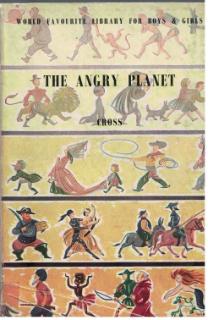Transcript: Bumpus Bookshop
Brian’s first position in the book trade was with Bumpus, one of London’s oldest and most prestigious bookshops, then on the south side of Oxford Street, near Marble Arch. In this transcript from the oral history recordings, he describes how he found this job in the summer of 1948 through a chance conversation between his mother and a neighbour whose son was about to go into the Air Force.
His mother told my mother that he’d had this job in London at a bookshop, and that they might take me on while I was waiting to be called up. He came and saw me and we had a chat about it. I got the name of John Wilson [the manager] of Bumpus, and I phoned him up. I said, ‘Your Mr Hunnings is leaving. Can I take his job?’ ‘Well, come up and see me.’ So I went up to Bumpus. Tiny, narrow office, completely chaotic. Books, papers everywhere. He said he would take me on – I think it was two pounds a week – and to start straight away, more or less. So from the September I started working at Bumpus as a collector under the tutelage of David Bland [who] worked down in the basement. He was an ex-merchant navy man and took no nonsense from anyone. He worked fantastically hard, and knew the publishers of just about every book that was in print.
The first day I went in I was made over to a chap who was also a collector – he was detailed off to take me round for my first week. I was given a sack at the start of the morning, and a set of orders for stuff which either wasn’t in stock at Bumpus – a copy of which was urgently needed – or of books which they didn’t stock at all. There were three collectors: one did the City, I did the West End, and somebody else did Kensington and the west side of London. We were given these canvas sacks and a sheaf of orders and we had to go out and get these books from the trade counters. All the publishers had trade counters in London, so you got to know your beat.
The nearest one would have been Batsford’s, in Audley Street. They’d been evacuated during the war and all their stock [had been stored] in the basement of a country house. When I was working later in the book trade you could tell that certain books had been [there], because they still smelled musty from the cellars of this country house where they’d been immured.
Going up Oxford Street towards Tottenham Court Road … There was a firm called Iliffe – I think they did photographic stuff, so they would have specialist things which you wouldn’t expect to stock. Chambers [was] just off Soho Square – this was the London branch of the Edinburgh Chambers. And there were a lot of intermediate calls to small offices. If a society issued a small pamphlet and one of the customers wanted it, we would go and collect it in for them.
In those days there was a [company] called the Express Dairy which had cafes like Lyons Corner Houses, and I used to stop off for a cup of tea at the one in Holborn. It was about a penny or tuppence, and I was on very short commons. I had to go up [to work] on Saturday mornings, and my six-day-a-week season ticket on the Green Line from Enfield was all of seventeen and sixpence, so that ate into my two pounds.
Harrap’s were halfway to Covent Garden. I remember Harrap very well; they had a rather elaborate and splendid trade counter. I always got a cup of tea at Harrap’s. Allen and Unwin – at that time Stanley Unwin owned Bodley Head – would be in Museum Street. And over in Tottenham Court Road there was the American firm of Scribner, which did a certain amount of publishing for the English market.
The other place I used to go to was up at Regent’s Park. This was where Simpkin Marshall were located. Having been bombed out of Paternoster Row, they were functioning in this underground garage in Rossmore Court. Simpkin’s was a historic firm, founded in the 1820s, primarily as a wholesaler or, as they later used to call them, single-copy house. That means they stocked almost every book that was in print, and the book trade throughout the country could order a single copy from them, [which] saved them opening an account with the major publishers.
[Here] is a book called The Angry Planet by John Keir Cross, illustrated by Robin Jacques. Peter Lunn, 1946. Peter Lunn went bankrupt in 1946. He only lasted a few years, published a couple of hundred books immediately after the war. This is a late copy, and if you look on the dust jacket: ‘Sole distributors, Simpkin Marshall’. That jacket was designed by Simpkin Marshall for selling bankrupt stock of Peter Lunn. That’s the sort of thing I would go and collect from Simpkin Marshall in 1948.


